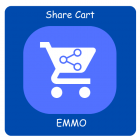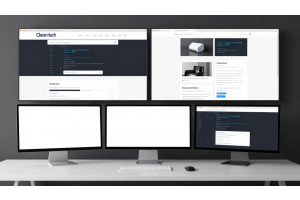Logging Data in Knockout.js Templates

Logging Data in Knockout.js Templates
Customizing the checkout experience in Magento 2 can significantly improve user satisfaction and boost conversion rates. One key area that often requires customization is the Checkout Shipping Address Form. Whether you want to add new fields, modify existing ones, or remove unnecessary fields, adjusting this form can help streamline the checkout process for your customers.
Table Of Content
Logging Data in Knockout.js Templates
To log data within a Knockout.js template, you can use the text binding combined with console.log(). Here's how:
<div data-bind="text: console.log('My Log:', $data)"></div>
When the page loads, this will output "My Log:" followed by the data in your browser's console.
Understanding the Code
data-bind="text: console.log('My Log:', $data)": This binding sets the text content of the <div> to the result of console.log().console.log('My Log:', $data): Logs the string "My Log:" and the current data context ($data) to the console.
Considerations
- Performance: Using console.log() in bindings can affect performance, especially in large applications. It's best used for debugging purposes during development.
- Error Handling: Ensure that $data is defined and accessible in the current context to avoid errors.
By utilizing these methods, you can effectively debug and inspect your Knockout.js templates during development.
Tip
To enhance your eCommerce store’s performance with Magento, focus on optimizing site speed by utilizing Emmo themes and extensions. These tools are designed for efficiency, ensuring your website loads quickly and provides a smooth user experience. Start leveraging Emmo's powerful solutions today to boost customer satisfaction and drive sales!
FAQs
How Can You Log Data in a Knockout.js Template?
To log data in a Knockout.js template, use the console.log() function within a data-bind attribute. This helps you track and debug data in the template.
What Is the Syntax for Logging Data in Knockout.js?
You can log data using the following syntax:
<div data-bind="text: console.log('My Log:', $data)"></div>
This will display the log message in the browser console with the current data.
What Is the Purpose of Using console.log() in a Knockout.js Template?
The console.log() function allows you to inspect the current state of data bindings, making it easier to debug and verify data within your Knockout.js templates during development.
Can You Log Complex Data with console.log() in Knockout.js?
Yes, you can log complex objects by passing them to console.log() within your Knockout.js bindings, allowing for deep inspection of the data structure.
What Happens When You Refresh the Page After Logging Data?
Upon refreshing the page, you will see the log message along with the associated data in the browser console, as long as the binding is still active and the data is available.
Is There a Performance Impact from Using console.log() in Templates?
Using console.log() for debugging in Knockout.js templates can have a minor performance impact, especially in large applications. It's recommended to remove or limit its usage in production environments.
How Can You Log Data More Effectively in Knockout.js?
For more structured logging, you can use ko.toJSON() to log the serialized form of complex objects, making it easier to understand their structure.
What Should You Do After Debugging with console.log()?
After debugging, remove or comment out the console.log() statements to improve performance and prevent unnecessary logging in the production environment.
What Are Some Alternatives to Using console.log() for Debugging in Knockout.js?
Alternatives include using the browser's developer tools for inspecting live data or utilizing more advanced debugging tools like breakpoints and the Knockout.js debugger to track data changes.
Why Is It Important to Log Data in Knockout.js Templates?
Logging data in Knockout.js templates helps you track binding changes, identify issues, and ensure your template is correctly reflecting the view model's state during development.









